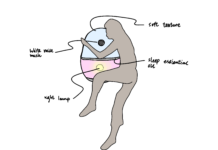Original Article:
Developing Unique Business Models: Going Beyond Services/Solutions by Michael Yaziji
https://www.imd.org/research-knowledge/articles/developing-unique-business-models–going-beyond-servicessolutions/
“Many firms across industries are beginning to realize that they cannot maintain significant product differentiation. Any product differentiation is quickly noted and matched by competitors… So, companies are looking for salvation from product commoditization hell in “services” or, even better, “solutions,”… Unfortunately, many companies across a wide swath of industries are moving simultaneously from products to services/solutions. In many industries the initial profit potential of services/ solutions will be reduced as businesses make this difficult transition… Let’s look at an example of a more radical business model adopted by Desso, a mid-sized European carpet tile manufacturer… Stef decided to completely transform the business model of the firm around Cradle-to-Cradle (C2C) design. C2C is a concept of designing products made of pure subcomponents to allow for easy disassembly and endless recycling without loss of quality. It requires and offers an entirely different way of doing business… All of these changes required a transformation along most of the dimensions of the organization’s design, from core organizational processes (e.g., deeper co-design of inputs with suppliers, tighter integration of the R&D and marketing departments; a fundamentally new design of the production processes), to new skill requirements across R&D, production, marketing and sales… The transformation was also risky… The story turned out to have a happy ending. From 2007 to 2011, Desso grew its 1% profit margin to over 9% and increased its 15% market share to 23%. It is seen as an industry leader in design… the preconditions for the successful transformation of a business model needed to be just right for Desso’s success. For instance, the private equity owners gave Stef greater freedom to pursue a risky and long-term strategy than might have been possible in a publicly held company…
Google: Non-paying users: The advertiser-pays model is being tried in a wider range of industries. Can you develop a business model starting with the assumption that end user will not be the one who pays?
Apple: Ecosystem competition: Only the computer, the iPhone, iTunes and the huge app developer community together can create the powerful value proposition of Apple. Could you create a more fully integrated ecosystem – either through tighter integration across the value chain or by more effectively fostering and bundling complementary products? Note: This strategy works for dominant industry players; small players end up in ecosystem ghettos.
P&G Children’s Safe Drinking Water Program: Cross-sector collaboration. This business model is especially interesting in bottom of the pyramid contexts where basic needs are going unmet because no single player can meet the need. Companies that can take the lead in building successful cross-sector partnerships can create markets for their products and services that would not have existed otherwise. Note: Building cross- sector partnerships is especially challenging, but is also extremely difficult to copy.”
This article does a great job in discussing the reality of the current market—specifically how the market has been steering toward that of the service/solution business model. It encapsulates how business model decision making must be strategic—an anomaly in its marketplace. The article also did well in highlighting some famously successful business models which changed the market. it



